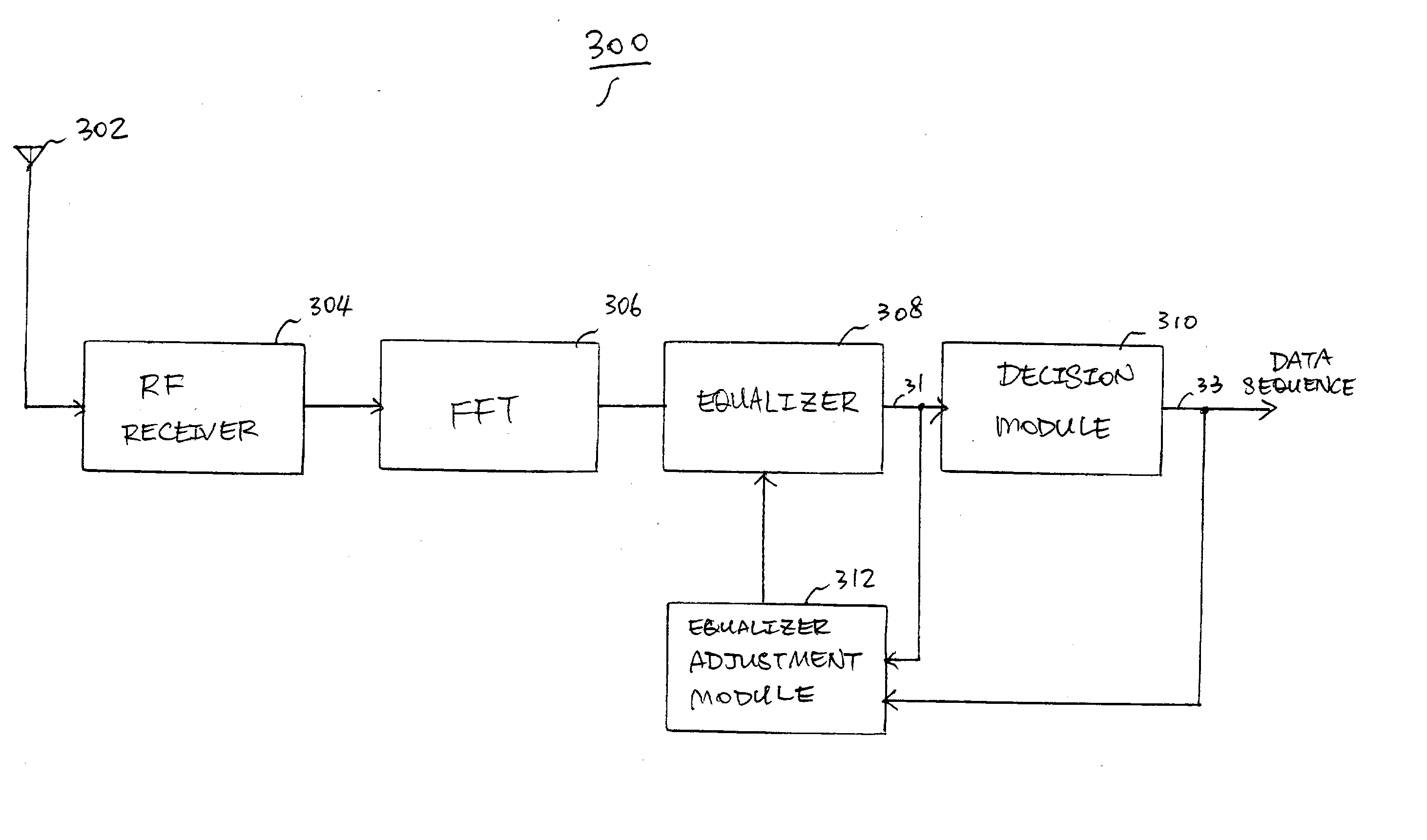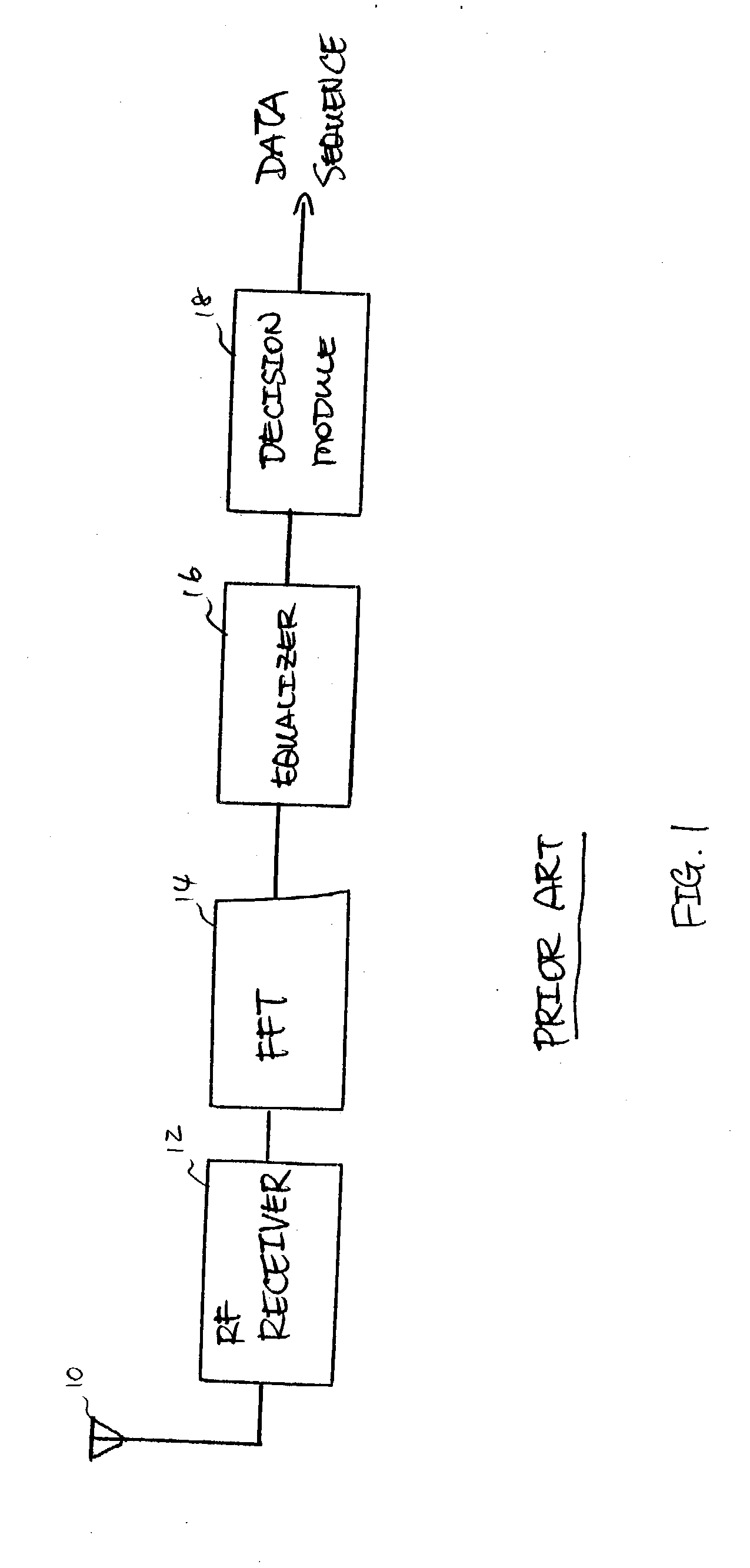Communication system with adaptive channel correction
a communication system and channel correction technology, applied in multi-frequency code systems, digital transmission, baseband system details, etc., can solve the problems of channel distortion, channel distortion, channel distortion, etc., to improve overall transmission quality, good and stable transmission quality, and improve transmission quality
- Summary
- Abstract
- Description
- Claims
- Application Information
AI Technical Summary
Benefits of technology
Problems solved by technology
Method used
Image
Examples
Embodiment Construction
[0030] In the following description, for the purposes of explanation, numerous specific details are set forth in order to provide a thorough understanding of the present disclosure. It will be apparent, however, to one skilled in the art that the present disclosure may be practiced without these specific details. In other instances, well-known structures and devices are shown in block diagram form in order to avoid unnecessarily obscuring the present disclosure.
[0031] The following examples are described with reference to OFDM and IEEE 802.11a standard. It is noted that the use of OFDM and IEEE 802.11a standard is for illustration purpose only. The same concepts can be applied to other coding and modulation techniques as well as other communication protocols that are known to peopled skilled in the art.
[0032] OFDM is used in many industrial and communication standards, such as IEEE 802.11a standard. Under the IEEE 802.11 a standard, digital data are grouped and transmitted in signal...
PUM
 Login to View More
Login to View More Abstract
Description
Claims
Application Information
 Login to View More
Login to View More - R&D
- Intellectual Property
- Life Sciences
- Materials
- Tech Scout
- Unparalleled Data Quality
- Higher Quality Content
- 60% Fewer Hallucinations
Browse by: Latest US Patents, China's latest patents, Technical Efficacy Thesaurus, Application Domain, Technology Topic, Popular Technical Reports.
© 2025 PatSnap. All rights reserved.Legal|Privacy policy|Modern Slavery Act Transparency Statement|Sitemap|About US| Contact US: help@patsnap.com



